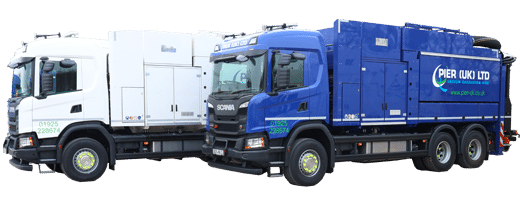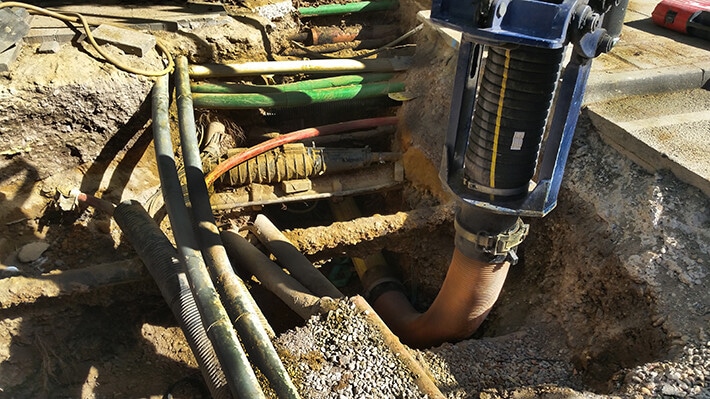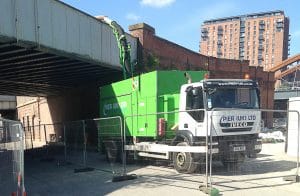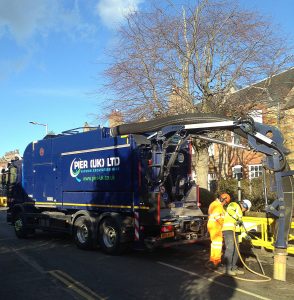Vacuum excavation is the best choice for many projects. The advantages of vacuum excavation over traditional excavation methods are numerous. It is safer, due to the reduced risk of utility strikes, as it simply sucks the earth from around the utilities. It is more environmentally friendly as it allows for less disruption to the topsoil, as well as delicate extraction around areas such as tree roots. It is quicker and cheaper than traditional methods. It is also incredibly versatile and can be used in a wide range of locations and projects.
Uses of Vacuum Excavation
Vacuum Excavation has increasingly become the smarter choice for safe excavation. The strong suction power can quickly clear away material, whilst the remote-controlled boom allows for precision at a safe distance. With an array of suitable applications for this no-dig technology, we have noted the top Vacuum Excavation uses.
1. Exposing Underground Utilities
Using suction power to gently pull away the material from around buried utility line has many more safety benefits than traditional ‘digging.’ The no-dig approach uses suction power to extract the ground material, reducing the risk of tools striking the lines and cutting local utilities.
2. Trial Holes and Buried Asset Surveys
When you’re working on a complex site with an array of utilities underground, using a Vacuum Excavator for trial holes checks the accuracy of utility location tools and provides a blueprint of what is buried underneath.
3. Deep Excavation Work
For deep excavation work, the remote-control operation of the vacuum boom ensures that the work can be carried out from a safe distance. The precision control ensures that the work can be completed quickly, but in a safely controlled manner. Extension pipework means that the work can be carried out in hard-to-reach locations.
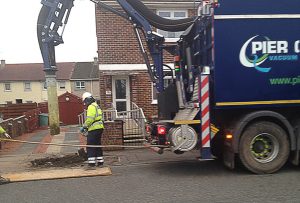
4. Tank Excavation
For industrial sites with tanks, containers, bunkers and silos, the Vacuum Excavator can make light work of emptying out vessels. The equipment is often used to remove stored material for deep cleaning or decommission old storage units, the strong suction power provides fast clearance.
There are many more Vacuum Excavation uses and if you have a project that you think using a Vac-Ex would benefit from, please enquire with our team.
5. Excavation for Rail Line Maintenance or Removal
Maintaining rail lines requires precision work that can be carried out safely and with minimum disruption to the rail service. Vacuum excavation is quick and precise, making it the ideal choice.
6. Site Preparation
Sites need to be cleared before construction work begins. It is unclear on some sites what is below ground level, but the safe excavation technique of using the power of suction reduces the risk of clearing sites.
7. Municipal Work
Often carried out in restricted areas, which much existing infrastructure to work around, vacuum excavation is a popular choice for municipal work. Often consists of vital work that needs to be carried out swiftly to restore necessary services.
8. Landscaping
Many landscape projects involve moving large quantities of earth. Vacuum excavation allows you to easily and quickly move earth from one area to another, whether you need to build up in one area, or take away in another. Creating the initial landscape structure quickly and efficiently helps to keep the project on budget and on track.
9. Construction
Construction sites use excavation to clear areas ready for foundations, vacuum excavation is chosen for its safety, speed, and versatility on construction sites.
Advantages of Vacuum Excavation
There are many advantages to using vacuum excavation on your next project. Vacuum excavation is used across projects of all sizes, and across a multitude of different locations, all of which benefit from its many advantages over traditional excavation methods.
1. Non-destructive
Vacuum excavation allows you to excavate soil without damaging the delicate topsoil, this enables you to preserve important flora and fauna. It can also be used to carefully excavate around tree roots, helping to maintain the life and health of the tree. Where you are working on sites with tree preservation orders, or where you wish to move trees to another location, being able to extract them with no damage is extremely important.
2. No Utility Plans Required
Whilst is it advisable to have utility plans for your site, if you have no plans or out-of-date plans, then using vacuum excavation is the only safe way to excavate your site.
3. Minimises the Risk of Utility Strikes
Utility strikes are notoriously dangerous and expensive. Using a suction excavation method reduces the risk of cable strikes, as the earth is safely extracted from around the utilities.
4. Cost Effective
Vacuum extraction is cost-effective, a vacuum machine can clear a site far quicker than traditional manual labour, which makes it a cost-effective method.
5. Safer and Cleaner Work Site
In traditional extraction, the dust from the ground is sent into the atmosphere, which can have long-term health risks for the workforce. With vacuum extraction, the dust is sucked up, helping to keep the air cleaner and safer. This combined with the reduced risk of cable strikes helps to improve the safety and cleanliness of your site.
5. Faster
Many projects have tight deadlines and complex schedules. Vacuum extraction is faster than traditional extraction, making it the ideal choice for many sites.
6. Environment friendly
It is less disruptive to the local environment and less polluting for the air and nearby waterways. Vacuum extraction is a more environmentally friendly way to carry out excavation on your site.
7. Vacuum Excavation Safety
The safety aspect of vacuum extraction is all-important. Cable strikes have long been a serious concern during site work. Utility plans are often outdated or missing, increasing the risk to the workforce. Being able to safely uncover utilities has improved the safety of construction sites. Reducing the risk to your workforce is essential, and choosing safer excavation methods is an excellent step to take toward safer construction.
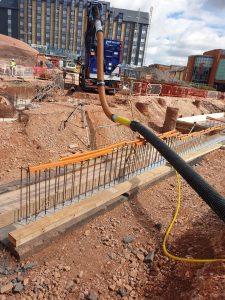
Conclusion
It is easy to see why vacuum extraction has become the extraction method of choice for many projects. It is safe, cost-effective, quick, and environmentally friendly. It can be used in built-up city areas, or hard-to-reach rural locations. It can be used on projects of all sizes and scales. There are different types of vacuum excavators available, from small city excavators, to tracked excavators that can be used at locations where wheeled vehicles cannot access. In short, the vacuum excavator has improved the extraction techniques of civil engineering across all areas and is the go-to choice for the majority of projects. If you are considering vacuum extraction for your next project, why not speak to our friendly and helpful team today on 01925 228 674

